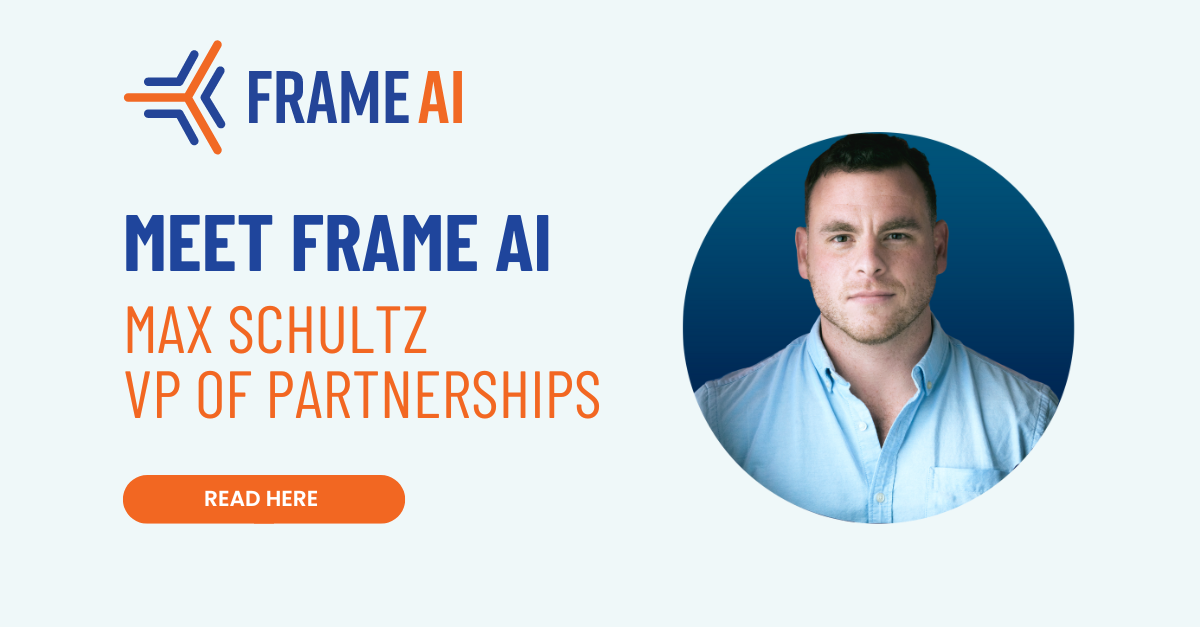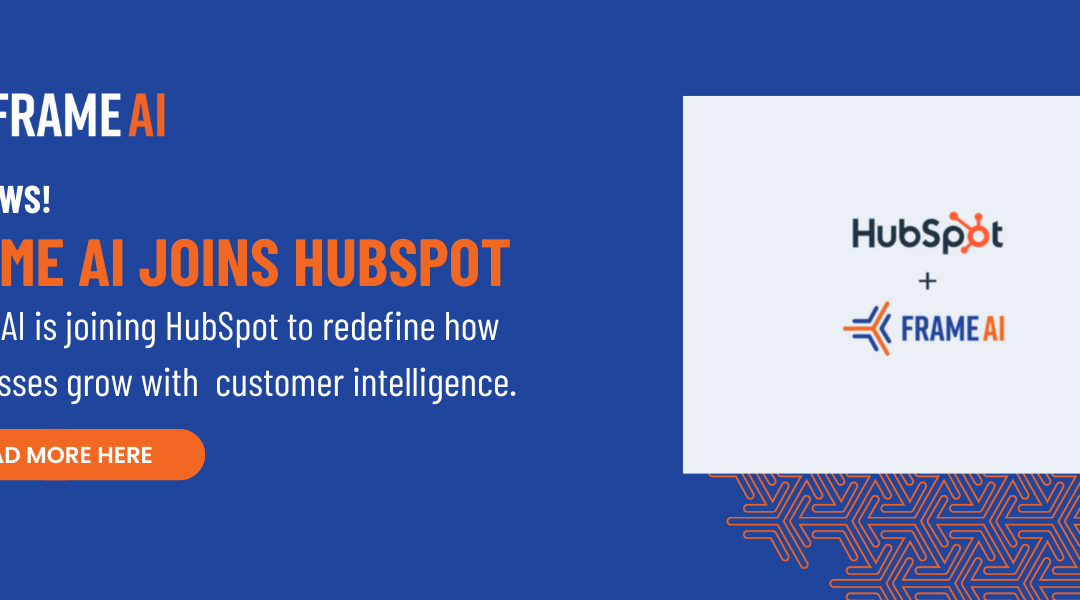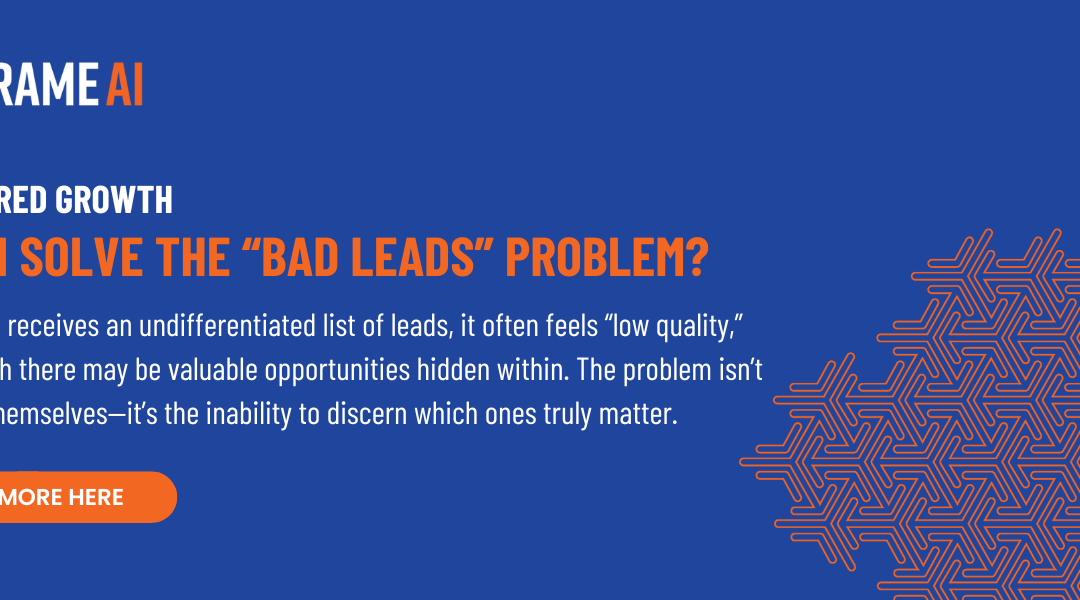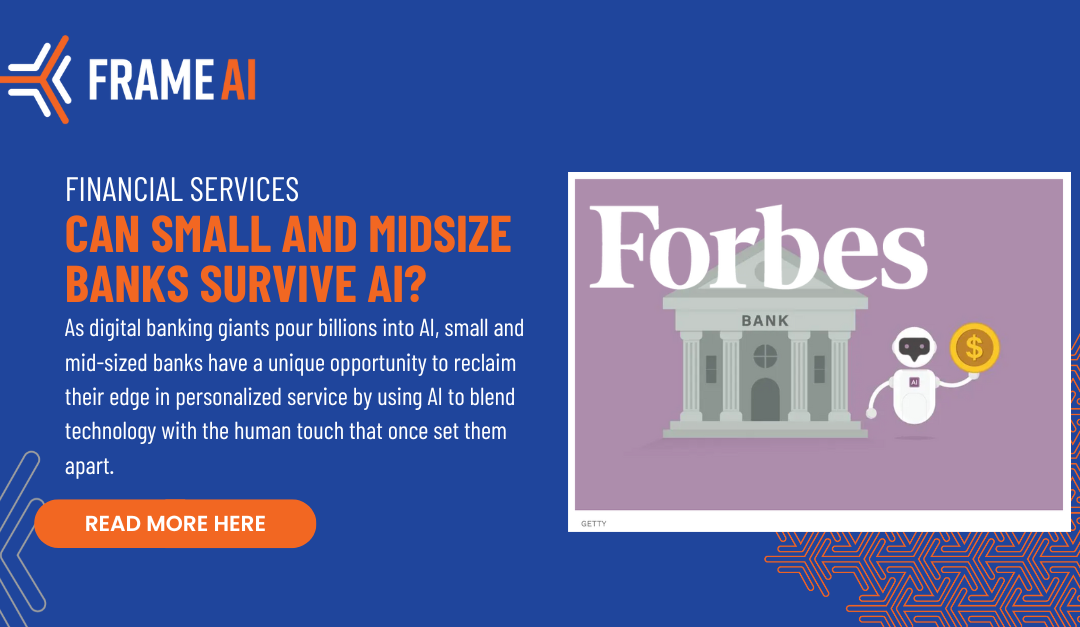1. What do you do at Frame AI?
I’ve been here since 2019. I am the Vice President of Partnerships at Frame AI. Basically, my job is to identify partner technologies and tech platforms that could leverage Frame AI’s natural language or unstructured data triggers. I’m looking for ways companies can connect the dots between what they’re already doing and the opportunities we detect in customer conversations.
2. You’re out in the field, living out the hype cycles. What was your first spin like?
It was interesting; 2019 was pre-generative. When I started at Frame AI, we were still going through what we call the “Watson Hangover.” Watson was a big thing back in 2017, and it would be all the rage and every business application would be powered off of it.
…Then Ken Jennings beat Watson on Jeopardy, and that whole house of cards crashed. Coincidental or not, that was around the time people realized Watson was not going to be the silver bullet they were hoping it would be. So when I got involved in business, people were still dealing with some of that cynicism.
“We have used Frame AI to implement maecenas faucibus mollis interdum. Donec ullamcorper nulla non metus auctor fringilla. Nullam quis risus eget urna mollis ornare vel eu leo.
MD Technology, Gitlab
3. What are you seeing now? How is it different?
Now, everybody knows about AI. I used to talk about my job, and my grandmother would not know what I did. Now she tells everybody I work in AI and all her friends know about it. We all have a new shared context of AI. It’s become socially relevant, and that’s a big thing.
As for the hype cycle- Ken Jennings isn’t beating Chat GPT on Jeopardy, but as we enter year two, there is a sense that everyone is getting impatient. People are waiting for that next killer app to show up and make day-to-day life feel different. And that cynicism is becoming a talking point in the tech influencer LinkedIn-O-Sphere. And it’s not all that unfair – a lot of these folks invested a lot of money in the space. David Cahn from Sequoia Capital has a great article on this – he calls it the “600 Billion Dollar Question”.
Now that AI’s become ubiquitous, every company is an AI company. People are waiting for it to show up in terms of revenue and productivity. So, according to David Cahn, the number we’re looking for is… 600 billion dollars. And that’s been tough. This worry might look silly in five years, but right now I think people are falling into the “trough of disillusionment.” Especially when they look at the bill AI has already rung up for investors.
4. What do you think is holding us back from answering that $600 billion dollar question?
Many applications so far have been relatively experimental, which can still be impactful. But a lot of them are built with the RAG architecture — Retrieval Augmented Generation — in mind. This is where a human asks dynamic questions of a stable library of data and gets a dynamic answer (think ChatGPT!). That technology scales with interactive human attention, which can be huge, but results in last-mile applications being the primary focus.
Klarna had a perfect example of this. They replaced the productivity of 700 agents using a single AI bot and were able to save 10 million dollars. That’s a huge impact, and it was all over the news a few months back. But even that still only scales with the interactive attention customers give it. It can’t answer questions customers aren’t asking–or don’t know to ask.
We have to figure out how to scale AI with data— how can AI power automation, not just interactive attention? Historically, that’s how businesses scale efficiently. So, right now, it’s about recognizing what you need to unlock automation. You need consistency, you need reliability, you need predictability. The output needs to be standardized. And for a lot of RAG processes that’s really hard.
5. Where do you see the most significant opportunities for AI to scale with data?
Organizations have massive streams of unstructured data– data that comes in the form of natural language strings found in calls, emails, chats and more. In my opinion (I’m slightly biased), that’s where we will find the most significant opportunities— figuring out how to make this massive stream of unstructured data— participate in today’s world.
The biggest gains we’re going to see from a productivity standpoint will happen where we can get AI to step in and take part in the infrastructure we have built over the last 25 years. Until we make it to the AI saturation point, we’re going to need our “dumb systems” to talk to our artificially intelligent systems. So the question is, how do we get AI to produce a consistent, reliable output that can then power workflows and automations all across the organization? You know – without ripping out and replacing all of the systems we rely on today.
6. Can you give a concrete example of how AI can participate in these existing systems?
Let me give you an example of what actually happened to me. About three years ago, I was looking to get engaged to my then-girlfriend, now wife. I was down at the jewelry store, I picked out the ring, went to pay, and the transaction was declined.
Then I got a text message from Chase saying my they declined it because it was over the limit. So I called and told them I needed to increase my limit. They have to ask me why because of BSA and AML (Banking Secrecy Act and Anti-Money Laundering) compliance. So I tell them I’m getting engaged and I need to buy a ring. The agent was really nice. They asked me if $10k is enough, and I told them it was way more than I needed and that I was saving for a house. We laughed, I bought the ring and got engaged.
It’s a happy story for me but an unhappy story for the bank, because_ I told Chase I was saving for a house_ and that data went off into some warehouse and Chase never did anything about it. I bought a house a year later with another bank.
The opportunity for AI comes with these massive streams of customer data. Chase gets something like a hundred million calls a year from customers talking about what’s going on in their lives, and none of that data is currently being used.
The contact center isn’t concerned with those opportunities. Their job is to resolve your issue, they’re not in the business of selling mortgages. So the bank needs to understand that this data is getting stuck here, and figure out how to get it to my loan officer, Mike, because I’m not going to have that many mortgages in my life. And that’s what AI can do— interpret that data and get it where it needs to go.
7. What are the barriers to entry for this kind of investment in systems and automation?
You just need the will to make the change because every consumer-facing organization has a massive stream of unstructured data somewhere along the way. It could be your social data. It could be your interaction data. It could be your event data.
The data exists, and the latest AI applications can connect that data with the universe of available actions— to sales, and marketing, across the organization. Sometimes we call this orchestration. That’s where I think we’re going to start to get at the 600 billion dollar promise.
8. You gave a banking example. What industries are best positioned to benefit from this kind of investment?
Anyone who has regular conversations with their customers, especially those in regulated industries like banking, insurance, healthcare, and finance can leverage this kind of investment. Those businesses are talking to people regularly. Those are places where there is a broad surface area of unstructured data that we can find valuable signals in and use those signals to power actions across the org.
9. Proudest moment at Frame AI?
I’ll do a fun one. We’re a pretty nerdy company. At the beginning of this year, I started collecting Dungeons and Dragons dice. So I created a channel called Roll of the Day, and I’d roll each day and everyone guessed the roll. It’s just for bragging rights. People got into it, and we sent everyone dice. So now we take turns rolling and give out golden dice as trophies. We’re a remote company, so it’s nice to have a venue for talking about things that are not work-related and to have a shared experience.
10. Best career advice you’ve ever received?
When I was 23, I decided I was not going to medical school. And when I say decided, I mean my grades were not going to support me going to medical school. My mom was in tech sales, so I told her I was going to do that. And she said, “That’s a terrible idea. You shouldn’t do that.” But I was 23 and thought I knew everything, so ignored her excellent advice and said, “Nah, I think I’m going for it.” (Had to learn the hard way.)
She goes, “Max, here’s the thing. If you’re going to do this, you need to really keep one thing in mind, and it’s that you have to know when to be happy.”
In life, and especially in startups, It’s hard to feel satisfied with where you are at any given moment because there’s always something to do next. There’s always a next step that keeps us in the conveyor belt mode, and that can lead to difficulty feeling satisfied.
My mom’s point was: don’t get stuck in that trap. If you only see yourself as going up or down, you’re going to burn out. I’ve been doing this a while, and I don’t always succeed, but taking that advice to heart has really helped.
11. Favorite way to use AI outside of work?
Well, my wife is pregnant now, so I’m constantly asking Chat GPT for different types of pregnancy advice or baby development questions. I’m trying to collect all of the information I can, because there’s very little else I can really do. Tips, advice, and even recipes from ChatGPT have been really helpful. PSA Check out Choline – it’s very important for baby development!
To learn more about how Frame AI unlocks unstructured data, request a demo today.




